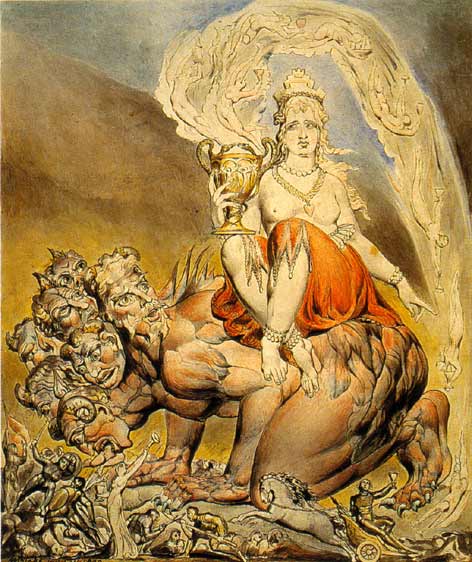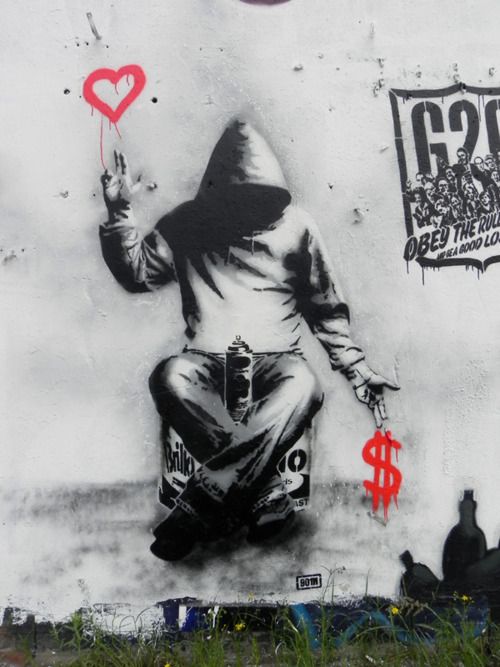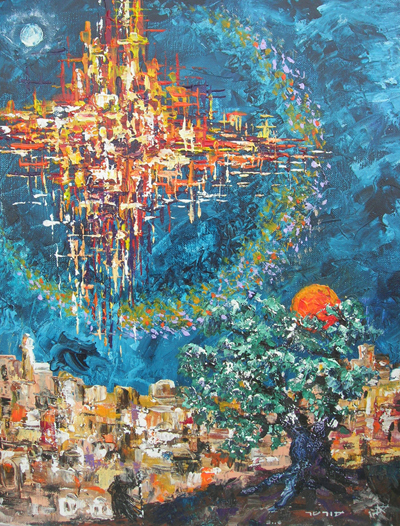The Tale of Two Kingdoms - Week 8
15/05/16 11:30 Filed in: Theology
(Thanks to William Butler for the above picture)
The news is often bewildering. Corrupt leaders wield harmful power, and we shake our heads. It makes no sense. Does no one else see through their veneer?
Political cartoons can provide welcome relief for our weary brains. They can make us laugh if we understand the meaning but more than that, they provide sharp and serious critique, making us rethink our assumptions about the way things are. Everyone is familiar with the current events behind the images, and the artist gives us a perspective to help us see the world in an unexpected way. Using the skills of irony, symbolism and exaggeration, a good cartoonist can change the opinions of people.
One recent image showed the face of an ostrich which also looked strikingly similar to a US presidential hopeful. “This person doesn’t have power,” the picture implied, for we all know how the ostrich buries its head in the sand, just as some leaders avoid what is true or real.
The word pictures in Revelation work in much the same way as political cartoons. John uses them to expose the shortcomings of first century society to the scrutiny of his readers, and his cartoons still apply all these years later. Using images like deranged beasts emerging from the sea and the land, John gets us to consider what happens when political structures become abusive. Then and now, he wants us to open our eyes to dangers we might not be aware of otherwise.
There is a particularly vivid word picture in chapters 17 & 18. It has inspired many an artist to paint it. John receives a vision in the wilderness of a woman riding on a beast from the sea. The reader would have known that the 7-headed beast represented Rome. The 7 heads would have reminded everyone of Rome’s 7 kings and 7 mountains.
And now the image becomes layered with more implications when a woman is riding it. She's a harlot, wearing a sumptuous gown and the finest jewelry, displaying the ultimate in materialism. It’s eye-catching but gaudy, over-the-top and even vulgar. The woman is Babylon the Great and if you google her, Wikipedia will tell you her nickname is the Whore of Babylon. She’s in a drunken stupor and there’s a cup filled with sewage in her hand. She’s drunk with the blood of the saints and Jesus’ witnesses. This cartoon couldn’t be more graphic and incisive. Imagine a supposedly great and proud city being portrayed in this way — greedy, blood-thirsty, drunk and violent. The picture is far from flattering!
The two features that stand out are Rome’s conspicuous consumption and its violence. People would cheer for Nero or any other leader, but who can clap when the empire is actually a predatory beast with a drunken prostitute riding it? Readers oppressed by Rome’s imperial corruption would have nodded in agreement. It may have looked powerful, but Rome was obsessed by its craving for luxury, and driven by the kind of violence exemplified by Nero’s slaughter of many Christians. The ancient writings said it well. The Romans “plunder, butcher and steal and call that empire. They ravage and steal and call it peace.”
This picture is the best of what a political cartoon does, for it makes its readers think. Just as the United States represents its highest ideals in the Statue of Liberty, Rome had the goddess Roma. To turn her into a garish whore would have shocked everyone. John wanted to startle his readers into seeing how seductive Rome’s power was, personifying the “fatal attraction” of the powerful evil temptress. Though it looked alluring, it was actually repulsive and debased. Though it looks like Rome has power, the cartoon brings Rome down to size, exposing the corruption.
It’s important to remember that just as Jesus is not a literal Lamb, we are not to read this word picture of the whore of Babylon literally. Rome was an empire, not a woman. It was an economic and political critique of Rome, not a critique of women.
By changing her name to Babylon, readers would have remembered the traits of a city with a notorious reputation and brutal conquests such as the destruction of Jerusalem 600 years earlier. It was an empire that was already fallen, and it was daring of John to call seemingly glorious Rome by this name. John uses the image of the harlot to portray the seamy side of his society. Even the woman is a victim of Babylon, for diabolical evil was behind her becoming who she was. Why would anyone want to conform to a society like that?
John is like a graffiti artist who scribbles all over a city everyone thinks is strong and virtuous. He’s challenging people’s perceptions, asking them to resist and choose something else. Don’t be fooled! In one of the most poignant verses of Revelation, John warns his readers not to go with the flow and to live by different values. “Come out of her my people, so that you don’t take part in her sins and don’t receive any of her plagues!” (18:4)
For us, Babylon represents not just modern day cities, but all the addictive attitudes and actions that can claim us. Like the harlot, we have often chosen to ride the beast but we are also victims of evil. The lustful energy to consume and possess can so quickly turn destructive and drive us to actions that are evil. It ends up victimizing us in some kind of chains. It’s easy to think of sweat shops which enslave children or the cycles of poverty that create gangs, prostitutes and violence in our cities, but what about those dark corners of our hearts where we harbor unforgiveness, pride or anger? We commiserate with the Apostle Paul who lamented, “For I do not do the good I want, but the evil I do not do is what I keep on doing.” (Romans 7:19)
The purpose of all apocalyptic journeys is to give us a wake up call. As we saw in the terrifying visions Scrooge received (see Week 4), the disturbing images cause us to ask whether this what’s going to happen, or what might happen? Why is John even showing us these images of corruption? Are we past hope?
Craig Koester kept reminding us that when things look grim, we are to “Keep turning the page”. If John is asking the early Christians to leave Babylon, then there must be an alternative to its materialism and violence, but first it was crucial have our eyes opened. Remember the movie Wizard of Oz? The wizard holds many empty promises to the travelers, but in the end, the curtain is pulled back to reveal a small, powerless man playing tricks.
In the same way, Revelation’s horrific visions pull back the curtain and reveal the Roman empire for what it really is. In The Rapture Exposed, Barbara Rossing says, “It is not the great eternal power it claims to be, but a demonic beast that oppresses the world.” Like the ancient Israelites leaving Egypt, we have to make another exodus away from what enslaves us. Led by the Lamb, we have to undertake a spiritual exodus out of the empire. We are given a new vision of how things truly are, and we are called to be faithful.
John saw the beginning of the way things truly are in the first of his apocalyptic journeys in chapters 4 & 5, where he travels up to heaven and sees a beautiful vision of God's throne. As we’ve already learned in previous blogposts (see Week 5 and Week 6), despite appearances on earth, the throne room holds the true power behind the universe.
At the end of Revelation, John shows us a breathtaking vision of an another city, an alternative to Babylon — God’s wonderful paradise-like world called the New Jerusalem, descending from heaven like a bride, inviting us in. As it says in Philippians 3:20, we are citizens of this holy city. It’s the one we are called to hope for.
The early Christians heard in John’s vision that there is here on earth a community that is an alternative to empire. They come together to worship around a radical and transforming vision of the joyful reign of God in a city called the New Jerusalem. The gates there are never closed. They stand open 24/7 and everyone is invited in. It’s packed not just with Jews and Christians, but with everyone. The 7-headed beast is completely opposite from the Lamb and they have utterly different kinds of power. True, both were slain, and both went on to live, but the crucial difference is that the Lamb rises from the dead to give life to others, whereas the beast rises from the dead to inflict death on others.
We are called to follow the Lamb, not the seductive powers that only enslave us in the end. The redeeming quality of the Lamb’s self-sacrifice was completely unlike the pretensions of Rome or any other power.
This is truly a tale of two kingdoms and John in Revelation is asking for our allegiance. We’re at a fork in the road. Where is your heart? Which way are you facing? Listen deeply to your conscience.
P.S. Stay tuned for Blogpost #10, when we’ll learn more about the New Jerusalem!
Next Post

The news is often bewildering. Corrupt leaders wield harmful power, and we shake our heads. It makes no sense. Does no one else see through their veneer?
Political cartoons can provide welcome relief for our weary brains. They can make us laugh if we understand the meaning but more than that, they provide sharp and serious critique, making us rethink our assumptions about the way things are. Everyone is familiar with the current events behind the images, and the artist gives us a perspective to help us see the world in an unexpected way. Using the skills of irony, symbolism and exaggeration, a good cartoonist can change the opinions of people.
One recent image showed the face of an ostrich which also looked strikingly similar to a US presidential hopeful. “This person doesn’t have power,” the picture implied, for we all know how the ostrich buries its head in the sand, just as some leaders avoid what is true or real.
The word pictures in Revelation work in much the same way as political cartoons. John uses them to expose the shortcomings of first century society to the scrutiny of his readers, and his cartoons still apply all these years later. Using images like deranged beasts emerging from the sea and the land, John gets us to consider what happens when political structures become abusive. Then and now, he wants us to open our eyes to dangers we might not be aware of otherwise.
There is a particularly vivid word picture in chapters 17 & 18. It has inspired many an artist to paint it. John receives a vision in the wilderness of a woman riding on a beast from the sea. The reader would have known that the 7-headed beast represented Rome. The 7 heads would have reminded everyone of Rome’s 7 kings and 7 mountains.
And now the image becomes layered with more implications when a woman is riding it. She's a harlot, wearing a sumptuous gown and the finest jewelry, displaying the ultimate in materialism. It’s eye-catching but gaudy, over-the-top and even vulgar. The woman is Babylon the Great and if you google her, Wikipedia will tell you her nickname is the Whore of Babylon. She’s in a drunken stupor and there’s a cup filled with sewage in her hand. She’s drunk with the blood of the saints and Jesus’ witnesses. This cartoon couldn’t be more graphic and incisive. Imagine a supposedly great and proud city being portrayed in this way — greedy, blood-thirsty, drunk and violent. The picture is far from flattering!
The two features that stand out are Rome’s conspicuous consumption and its violence. People would cheer for Nero or any other leader, but who can clap when the empire is actually a predatory beast with a drunken prostitute riding it? Readers oppressed by Rome’s imperial corruption would have nodded in agreement. It may have looked powerful, but Rome was obsessed by its craving for luxury, and driven by the kind of violence exemplified by Nero’s slaughter of many Christians. The ancient writings said it well. The Romans “plunder, butcher and steal and call that empire. They ravage and steal and call it peace.”
This picture is the best of what a political cartoon does, for it makes its readers think. Just as the United States represents its highest ideals in the Statue of Liberty, Rome had the goddess Roma. To turn her into a garish whore would have shocked everyone. John wanted to startle his readers into seeing how seductive Rome’s power was, personifying the “fatal attraction” of the powerful evil temptress. Though it looked alluring, it was actually repulsive and debased. Though it looks like Rome has power, the cartoon brings Rome down to size, exposing the corruption.
It’s important to remember that just as Jesus is not a literal Lamb, we are not to read this word picture of the whore of Babylon literally. Rome was an empire, not a woman. It was an economic and political critique of Rome, not a critique of women.
By changing her name to Babylon, readers would have remembered the traits of a city with a notorious reputation and brutal conquests such as the destruction of Jerusalem 600 years earlier. It was an empire that was already fallen, and it was daring of John to call seemingly glorious Rome by this name. John uses the image of the harlot to portray the seamy side of his society. Even the woman is a victim of Babylon, for diabolical evil was behind her becoming who she was. Why would anyone want to conform to a society like that?
Come out of her, my people!
John is like a graffiti artist who scribbles all over a city everyone thinks is strong and virtuous. He’s challenging people’s perceptions, asking them to resist and choose something else. Don’t be fooled! In one of the most poignant verses of Revelation, John warns his readers not to go with the flow and to live by different values. “Come out of her my people, so that you don’t take part in her sins and don’t receive any of her plagues!” (18:4)
For us, Babylon represents not just modern day cities, but all the addictive attitudes and actions that can claim us. Like the harlot, we have often chosen to ride the beast but we are also victims of evil. The lustful energy to consume and possess can so quickly turn destructive and drive us to actions that are evil. It ends up victimizing us in some kind of chains. It’s easy to think of sweat shops which enslave children or the cycles of poverty that create gangs, prostitutes and violence in our cities, but what about those dark corners of our hearts where we harbor unforgiveness, pride or anger? We commiserate with the Apostle Paul who lamented, “For I do not do the good I want, but the evil I do not do is what I keep on doing.” (Romans 7:19)
The purpose of all apocalyptic journeys is to give us a wake up call. As we saw in the terrifying visions Scrooge received (see Week 4), the disturbing images cause us to ask whether this what’s going to happen, or what might happen? Why is John even showing us these images of corruption? Are we past hope?
Craig Koester kept reminding us that when things look grim, we are to “Keep turning the page”. If John is asking the early Christians to leave Babylon, then there must be an alternative to its materialism and violence, but first it was crucial have our eyes opened. Remember the movie Wizard of Oz? The wizard holds many empty promises to the travelers, but in the end, the curtain is pulled back to reveal a small, powerless man playing tricks.
In the same way, Revelation’s horrific visions pull back the curtain and reveal the Roman empire for what it really is. In The Rapture Exposed, Barbara Rossing says, “It is not the great eternal power it claims to be, but a demonic beast that oppresses the world.” Like the ancient Israelites leaving Egypt, we have to make another exodus away from what enslaves us. Led by the Lamb, we have to undertake a spiritual exodus out of the empire. We are given a new vision of how things truly are, and we are called to be faithful.
John saw the beginning of the way things truly are in the first of his apocalyptic journeys in chapters 4 & 5, where he travels up to heaven and sees a beautiful vision of God's throne. As we’ve already learned in previous blogposts (see Week 5 and Week 6), despite appearances on earth, the throne room holds the true power behind the universe.
Alternative to Babylon: the Second City
At the end of Revelation, John shows us a breathtaking vision of an another city, an alternative to Babylon — God’s wonderful paradise-like world called the New Jerusalem, descending from heaven like a bride, inviting us in. As it says in Philippians 3:20, we are citizens of this holy city. It’s the one we are called to hope for.
The early Christians heard in John’s vision that there is here on earth a community that is an alternative to empire. They come together to worship around a radical and transforming vision of the joyful reign of God in a city called the New Jerusalem. The gates there are never closed. They stand open 24/7 and everyone is invited in. It’s packed not just with Jews and Christians, but with everyone. The 7-headed beast is completely opposite from the Lamb and they have utterly different kinds of power. True, both were slain, and both went on to live, but the crucial difference is that the Lamb rises from the dead to give life to others, whereas the beast rises from the dead to inflict death on others.
We are called to follow the Lamb, not the seductive powers that only enslave us in the end. The redeeming quality of the Lamb’s self-sacrifice was completely unlike the pretensions of Rome or any other power.
This is truly a tale of two kingdoms and John in Revelation is asking for our allegiance. We’re at a fork in the road. Where is your heart? Which way are you facing? Listen deeply to your conscience.
P.S. Stay tuned for Blogpost #10, when we’ll learn more about the New Jerusalem!
Questions for engagement — Week 8
- What does an alternative way look like?
- Can you think of real life modern situations, whether in real life or in movies or literature, which have been destroyed by corruption?
- We usually think evil looks evil and is easily identifiable and avoidable, but the image of the harlot tells us that it can look good on the surface. Can you think of seemingly good things that can enslave us in the end?
- What does it look like for God’s people to “come out of empire”? To live differently right where you are in the midst of our complex world? To live as if we are already claimed by God, modeling a different way of life? What example comes to mind from your community's life?
In case you’d like to read or listen to more…
- The Great Courses, Lecture 10 — “The Harlot and the Imperial Economy”
- Read or listen to the vision of both cities in Revelation 17 & 18
- Watershed played the song “Babylon and Zion” when we came to this lecture in our study. Josh Garrels’ lyrics capture the two cities perfectly.
- Listen to Barbara Rossing talk about the two cities of Babylon and the New Jerusalem in this 7 minute video.
- “Pay no attention to that man behind the curtain” — For a bit of comic relief, watch this 1 minute video of Dorothy from the Wizard of Oz revealing the truth what’s behind the curtain. This is how John exposes Babylon’s false power.
Next Post

blog comments powered by Disqus


